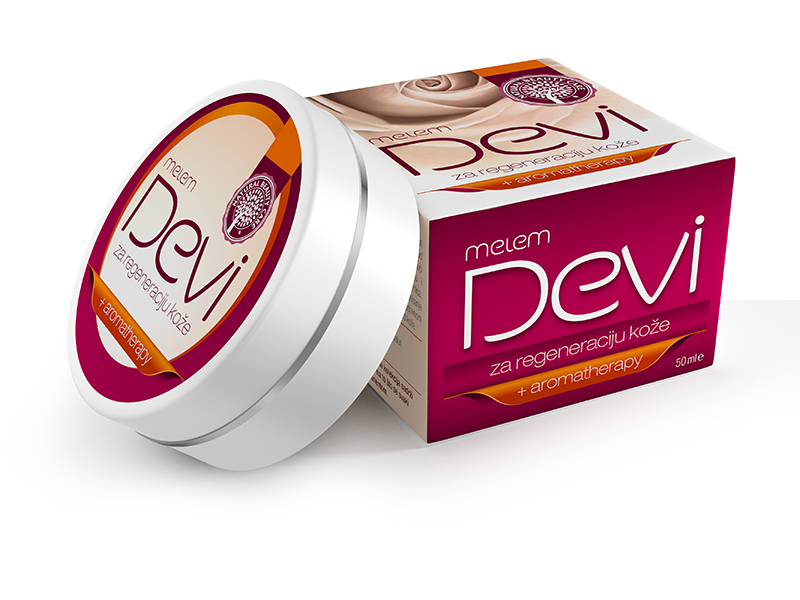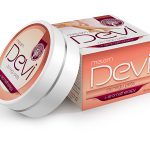(Triticum spp.)
It is widely used as food and as of late there have been heated debates about its usefulness versus harmfulness. What is certain is that it has been in use since the time when humans as a species began to make great strides towards progress. We owe a lot to wheat today. When wheat germinates, the benefits are manifold. Wheat germ contains about 700 times more magnesium, 12 times more phosphorus and five times more calcium than its seed. It is a treasure trove of vitamins, including vitamin E, which maintains the health and vitality of the skin.
WHEAT AS MEDICINE FOR THE SKIN
When oil is cold-pressed from sprouted wheat grain (its Latin name is triticum aestivum), a precious elixir of youthful skin is obtained; it contains up to seven times more vitamin E than other oils. Vitamin E is one of the strongest antioxidants that protects us from the negative effects of free radicals. Vitamin E stimulates the process of fluid exchange, protects skin cells from damage, reduces wrinkles, deeply nourishes and regenerates the skin, and is especially beneficial for dry, thin, sensitive and chapped skin.
This vitamin was first described in 1922 by Herbert M. Evans and Catherine Bishop. Fourteen years later, it was named tocopherol, from the Greek tocos meaning offspring and phero meaning to create, to give birth, because it was first identified as a nutritional factor in fertility. In addition to nourishing the skin and preventing it from drying out, it has been proven to be useful in more serious disorders, such as yellow nail syndrome, subcorneal pustular dermatosis, amyloidosis, atopic dermatitis, psoriasis, subcutaneous ulcers, melasma (pigmentation disorder), acne and scleroderma; it promotes wound healing and reduces the risk of skin cancer by strengthening its immunity. There is a lot of evidence that wheat as a medicine is as valuable as food.
Vitamin E has a strong anti-inflammatory effect on the skin, it eliminates swelling due to the effects of harmful UV radiation and other types of swelling by reducing inflammatory prostaglandin synthesis and interleukin production. The photoprotective effect of this vitamin makes it a necessary ingredient in the treatment of numerous chronic inflammatory skin conditions, as well as in cosmetics, because our body naturally converts vitamin E from wheat germ oil into retinol, which reduces the signs of skin ageing.
In addition to this vitamin, wheat germ oil contains vitamins B, A and D, phosphorus, zinc, iron, calcium, selenium and potassium, as well as essential fatty acids. Thanks to them, wheat germ oil prevents skin damage caused by negative external influences, it stimulates collagen production, softens the skin and gives it the necessary moisture. It effectively slows down the ageing process and smooths out existing wrinkles. Thanks to this oil, complexion will become even and the skin smooth and elastic; but that is not all. Wheat germ oil also helps with more serious disorders such as eczema, dermatitis and psoriasis, as well as with injuries such as burns and deep wounds. Wheat is the only crop that contains carotene – provitamin A and also vitamin D, so this oil provides excellent protection against the harmful effects of sunlight.
Just a few drops of this oil will gently but effectively cleanse the face and remove excess sebum without clogging the pores. Wheat germ oil application is not only limited to the skin. It is also great for hair, especially dry hair which is prone to splitting, and can also be taken orally.
WHEAT AS A MEDICINE FOR THE BODY
Wheat has been grown for almost 10,000 years and even Cleopatra used wheat germ oil. What casts a dark shadow on wheat today actually concerns processed wheat products, where the most valuable part is removed from its grain in an industrial process. Whole wheat grain, and especially wheat germ, are still an extremely healthy food and have been used in traditional and Ayurvedic medicine for centuries.
Although there is a dearth of serious clinical studies that have dealt with the medicinal properties of wheat germ, there are clear indications that they contribute to lower levels of cholesterol and triglycerides in the blood, prevent atherosclerosis, balance the level of insulin and thus help with metabolic syndrome and weight control and prevent cardiovascular diseases; thanks to fibres that are a natural laxative they act as a prevention and are used in the treatment for a number of digestive problems – haemorrhoids, constipation, irritable bowel and even colon cancer. What has the strongest anticancer effect in them are the lignans, and there is data about the strong anticancer effect of fermented wheat germ that has the power to destroy tumour cells of the colon, testicles, thyroid gland, ovaries, breast…
One of the ingredients of this oil is octacosanol, a fatty acid with alcohol that improves physical endurance and strength, but also affects fat metabolism, reduces cholesterol production and prevents damage to arteries. Like all cereals, wheat contains calories in no small amount: 100 grams of grain has 340 calories; germ contains almost the same – 360 calories. Therefore, as in everything, moderation should be exercised when consuming this cereal. Wheat germ can be added to dishes, pastries, porridge and smoothies and the recommended daily dose is one tablespoon.
WHEAT GERM OIL REJUVENATES
When it comes to wheat germ oil, what is extremely important is that it is obtained by the process of cold pressing, which is not an easy method. Hot extraction is much simpler and more lucrative, but its final product is devoid of any value. Top quality cold-pressed wheat germ oil is one of the valuable ingredients in Devi skin regeneration balm and Devi balm for heel care.
Devi balm for skin regeneration is used for daily skin care, against wrinkles and signs of ageing, but also for serious disorders – psoriasis, eczema and various types of dermatitis; it is extremely beneficial for scars, including those caused by acne and rosacea; it is used for dandruff, age spots and as prevention – to defend us from the harmful effects of sunlight and to help heal burns.
Devi foot balm, in addition to softening and nourishing the skin of the feet and heels, also contains essential oils that prevent the appearance and spread of fungi and eliminate unpleasant odours and sweating.
Today it is much easier to find the perfect combination for skin care and recovery than it was in Cleopatra’s times. And when it comes to quality, Devi balms are an absolute guarantee that it is top notch.


